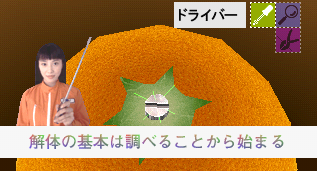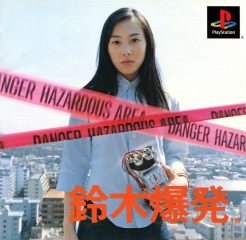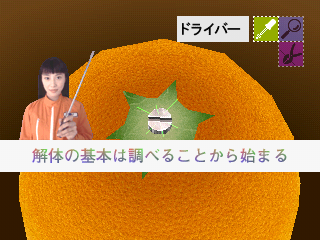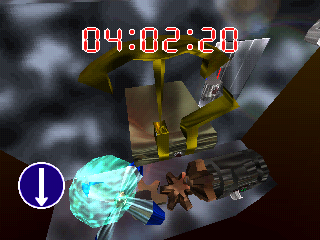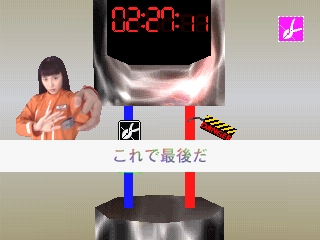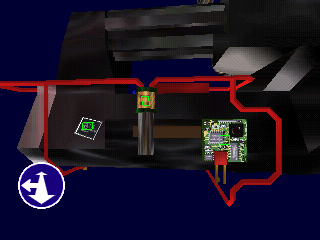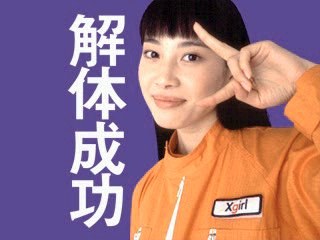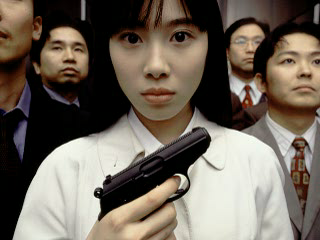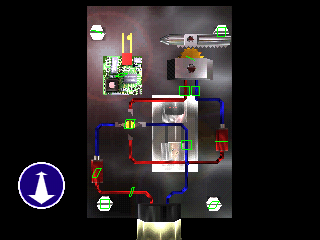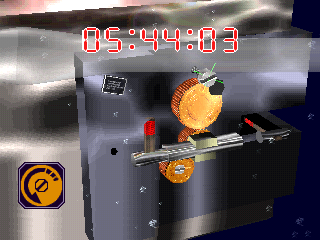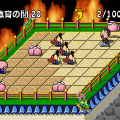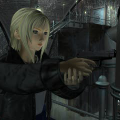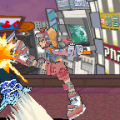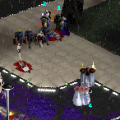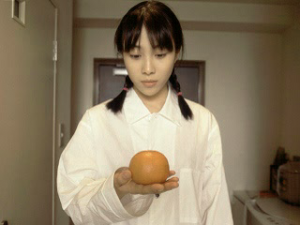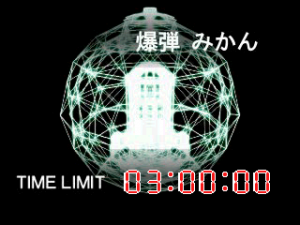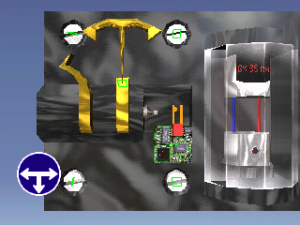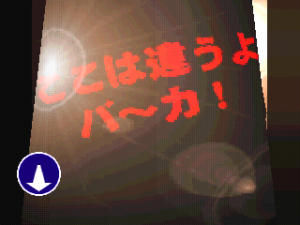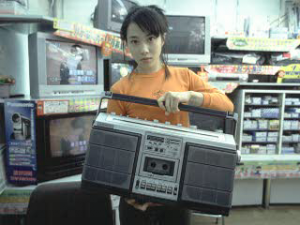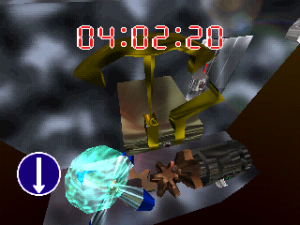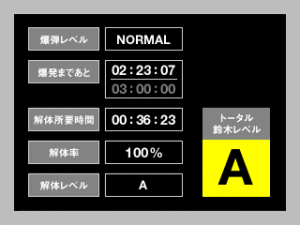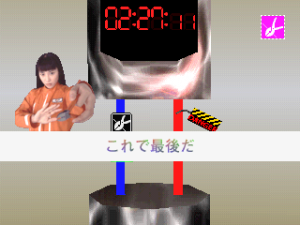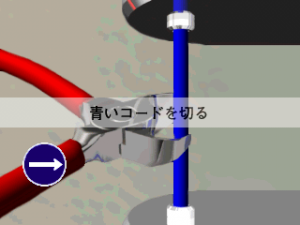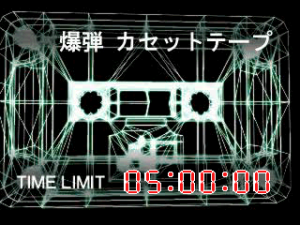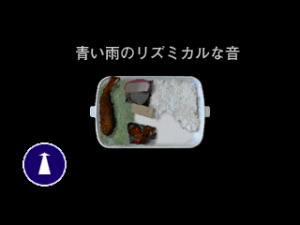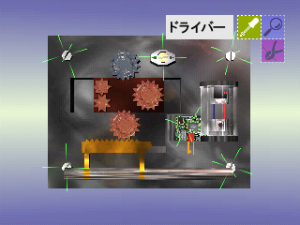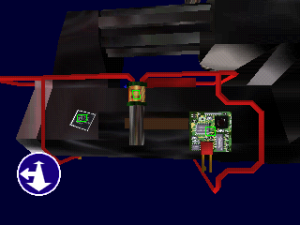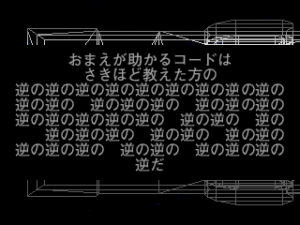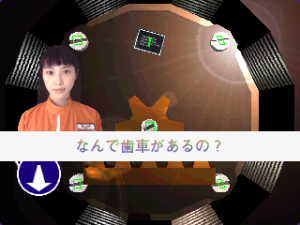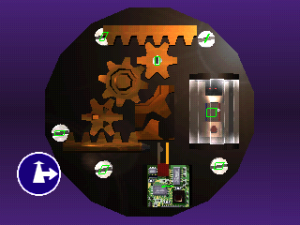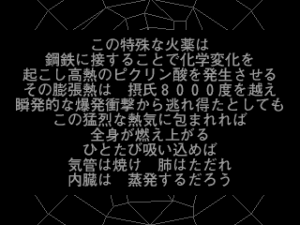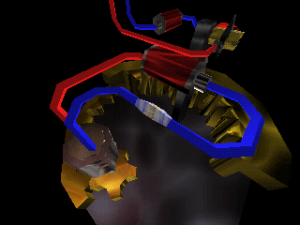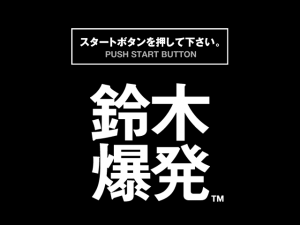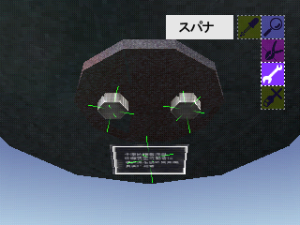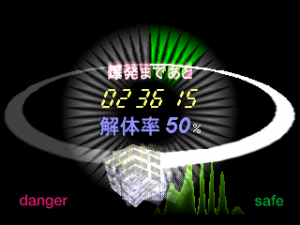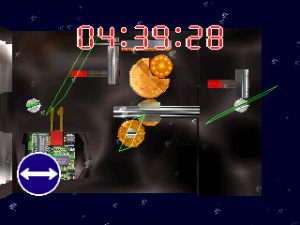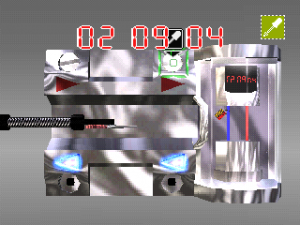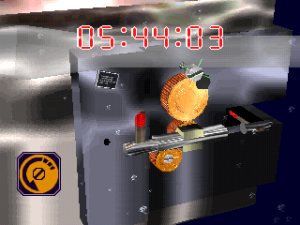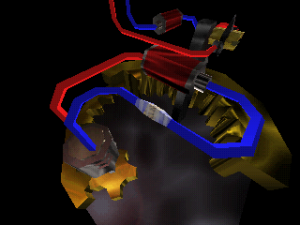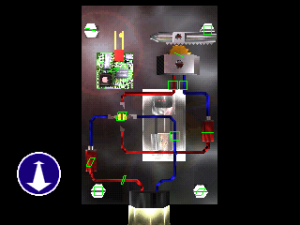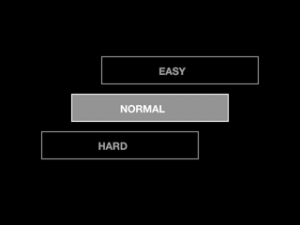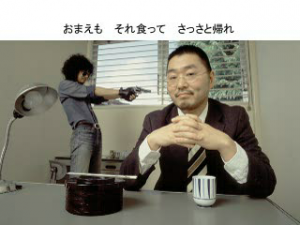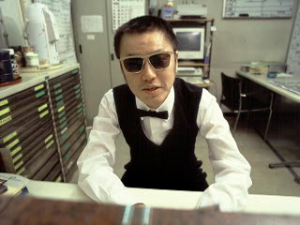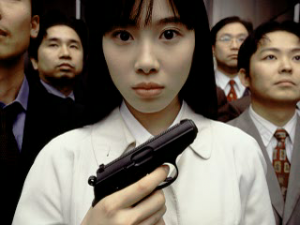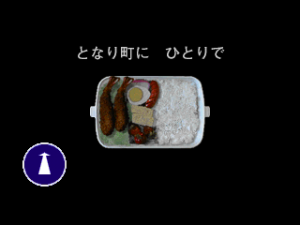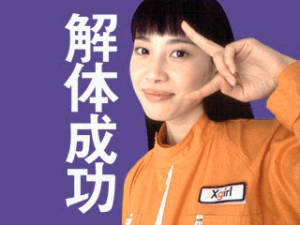Since the gradual shift into the third dimension, puzzle games have slowly become less and less representative of each passing generation of console hardware. It’s not surprising, as most puzzlers by design don’t require anywhere near the same amount of resources as an action game or a war shooter. Even on the surface there is rarely any tale to be told; you’re expected to dive head first into gameplay, exposition be damned.
Seemingly, the genre has always had more of a home among handheld and mobile devices where graphics and presentation are not as prominent in budgeting a release. In recent years the portable scene has proven to be a more fostering environment for the type of two-dimensional gaming that isn’t as marketable in a new era of high-definition media centers.
Despite the economics, every now and then a publisher will greenlight a concept for a puzzle game that they deem to be worthy of the console treatment. A game that would not just innovate in terms of gameplay but also ring all the bells and whistles of the console that it’s running on. This wouldn’t be just some simplistic tile stacker you’re grinding away at while waiting for your bus, no. You’re going to need your couch, TV and fully undivided attention as you enter a much more immersive dimension of head scratching.
The ‘90s were coming to an end and more than ever were games aspiring to become movies. Titles such as Final Fantasy VII and Metal Gear Solid had hit the desired sweet spot in fusion with film, paving the way to the 21st century for their respective genres. Puzzle games on the other hand had not reached an equivalent milestone within their league; they were still just puzzle games.
Sure, there were entries in the genre that had done well in the new, scary world of 3D. Games like Intelligent Qube, Kula World and Devil Dice were all successful enough to warrant a sequel or at the very least a rerelease. But financial success is not always reflective of any kind of evolution or maturation of a genre. Everything looked prettier but nothing was being refined. And perhaps it was with this mindset in the year 2000 that Enix decided to bankroll a game as outlandish as Suzuki Bakuhatsu.
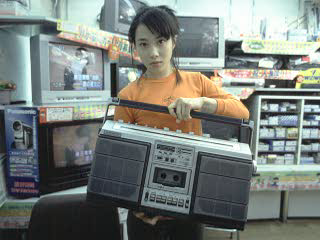 Suzuki Bakuhatsu (“Suzuki Explosion”) takes you through a day in the life of Ms. Suzuki who has the misfortune of running into bombs everywhere she goes. You can’t really blame her as these bombs are usually hidden within mundane, everyday objects – anything from cell phones to door knobs to even the moon. Luckily she is proficient at disarming them; when the occurrence of explosives in one’s life is that high it shouldn’t come off as that much of a surprise.
Suzuki Bakuhatsu (“Suzuki Explosion”) takes you through a day in the life of Ms. Suzuki who has the misfortune of running into bombs everywhere she goes. You can’t really blame her as these bombs are usually hidden within mundane, everyday objects – anything from cell phones to door knobs to even the moon. Luckily she is proficient at disarming them; when the occurrence of explosives in one’s life is that high it shouldn’t come off as that much of a surprise.
The story and scenarios in which she encounters these bombs are presented to the player through photographs that they can advance through at their own pace with a tap of the Circle button. Every stage is set up and introduced in this fashion, and the context is always bizarre but engaging. The very first “explosive” that comes her way is an orange that is delivered to her in the morning. She hears a small ticking and slowly realizes there is a bomb inside. The discovery and subsequent reaction segues us into the action.
At its core, Suzuki Bakuhatsu is a puzzle game. The overall goal is to disarm the bomb within a given amount of time before it detonates. This is achieved by taking apart the object that the bomb is buried within. Once fully dismantled, you are presented with two wires, one of which will disarm the bomb and the other will trigger it. You have to cut the correct one, otherwise the whole thing explodes and you have to start all over.
The controls are straightforward. You can only navigate in the directions as indicated in the lower left corner of the screen. Moving around the object and changing your perspective will reveal elements you can interact with, the most common of which being screws. This is when you access your selection of tools in the upper right and get to work.
In most stages you will use a screwdriver to unscrew and remove the casing of an object. You will also have a magnifying glass for reading the clues that are scattered across little black placards. Depending on the scenario, there are a few other situational tools such as wrenches and electrical tape, but most of this game is carried by the screwdriver. The last item you’ll ever have to use on any given level is the wire cutter to make the final snip which (hopefully) renders the bomb inactive.
Though all that might sound relatively easy to grasp, it’s only (literally) scratching the surface. As you strip away the outer layers of casing you are presented with traps hidden inside that if not carefully approached will trigger the bomb, ending the stage right away. The bulk of the puzzle solving in Suzuki Bakuhatsu is bypassing these traps successfully; the mechanisms behind traps are tied to an element you normally interact with that the game expects you to stop, slow down and look at in a different way.
One trap early on provides a good example of when you need to strategize. The screws that need to be removed have a direct influence on a hammer that is rigged to swing back and forth with every rotation of the screwdriver. The faster you unscrew, the faster and further this hammer will swing. Not too far off to the left of a hammer is a switch that when hit will set off the bomb. One would conclude that this particular set of screws needs to be removed in a way that is slow and cautious so as to not send the hammer flying towards the switch.
Other traps test how fast you can unscrew something within a limited window of opportunity. Sometimes the screws you need access to are obscured and the only way to expose them is to start a motor that will move the obstruction out of the way but slowly towards a switch, which (much like the one in the previous example) will set off the bomb once something has made contact with it. In some cases you can stop the motor and prevent the switch from being pressed but other times it might make more sense to just leave these troublesome screws for the very end — once you remove the last screw of any particular segment you automatically go on to the next layer where a more complex puzzle awaits.
If you look at Suzuki Bakuhatsu in a linear sense, every new playthrough will put you through the same three levels at the beginning. These levels introduce you to the mechanics of the game and employ basic puzzles to get you used to order of things. Upon completion of the third level, you are presented with a clock representing this particular day in Ms. Suzuki’s life. The stages themselves are indicated by the specific time they take place during the day, and you can only ever choose between two stages at once. Completing a stage will present you with two different times on the clock you can choose between. No matter what path you decide on however, the final selectable stage of any playthrough is always 12:00 AM.
The replay value stems from the path you take, as the stages you pick influence what stages you’re able to access later on, meaning you need to run through the game several times to be able to play every stage at least once. This is also where the difficulty settings come in. The game gives you “Easy,” “Normal” and “Hard.” The obvious difference between all three is the time allotted to complete each stage, with “Easy” giving you the most and “Hard” giving you the least. The harder difficulties also incorporate more alarmed traps into the stage – countdown sequences in which you must unscrew a set with very little leniency in time before explosion, usually with one-hundred or so milliseconds to spare.
The alarms can be quite frustrating when you’re dealing with a puzzle that needs to be worked through slowly, such as the aforementioned trap involving a hammer. Precision is key as there is not much room for mistakes, but some puzzles will take their share of trial and error to solve and as you make your way towards the end you will inevitably blow yourself to bits more than you can count. It seems rather sadistic but that is the beauty of this game. For all the unscrewing you do, it screws you right back. In fact, there are a lot of things that add up to a head-trip: dead ends thrown in to waste your time; wires that trick you into thinking they are the correct one; messages that flat out tell you you’re an idiot instead of providing any help.
Despite the constant abuse, the game somehow ensures you develop a thick skin and keep on trudging through whatever it throws at you. This could perhaps be due to its overly stylistic presentation. After all, a lot of puzzle games don’t have an emphasis on being cinematic, nor do they have the budget to be so. It’s hard to ignore the amount of effort and production value that went into designing the hip sights and sounds of this bomb-ridden universe. A puzzle game seldom needs to be as flashy as this, but everything about the way it’s packaged does pique your interest and motivation to keep at it as you wonder how zany it can get.
Designer Kouichi Yotsui had studied film before entering the game industry and though he had come to work much more with the latter medium, his inner film student does seem to shine in Suzuki Bakuhatsu. The live action segments experiment with different aesthetic styles to keep things fresh and interesting, but are generally shot and framed sensibly enough to establish context. Suzuki’s outfit and hairstyle also alternate throughout all these segments, keeping in line with an ever changing mise-en-scène. Model/actress Rin Ozawa manages to convey the frustration of her character pretty well through deadpan facial expressions that negate any need for dialogue.
Barring the main theme and the end credits, the soundtrack consists mostly of short jingles, with production credit going to Fantastic Plastic Machine (acclaimed electronic DJ Tomoyuki Tanaka), whose signature lounge style is quite complementary to the game. A lot of what you do hear is upbeat and jazzy in a vintage catalog sort of way and it meshes well with the exuberant sense of fashion that is present throughout the live action segments.
Most of Suzuki Bakuhatsu is devoid of background music and aptly so. With the first turn of the screwdriver the timer begins and all you hear is the clock ticking. As you approach traps and other danger, heart beats come into the mix. While it might not sound like much, the minimalism effectively sets the mood; you forget the absolute absurdity of whatever it is you’re taking apart and become focused on trying to survive.
Suzuki’s verbal reactions are another thing to note. As the tensions increase within any given level, her exclamations resonate well with your (understandable) level of confusion. In near death situations she will not hesitate to make panicking noises and scream here and there. Sometimes when you’re tiptoeing your way around a trap, she will say comforting things and even sing to calm herself down. None of the voice samples feel canned or repetitive, playing at just the right times ultimately putting you in the character’s shoes.
Given that it’s a puzzle game, in-game graphics really aren’t the main focus but for what it’s worth they do hold up pretty well considering the age of the system. The 3D models do the job and every object is textured nicely enough to look like what it should look like – on the outside, anyway; there is no way so many components could fit inside of a single orange!
The game is mostly import friendly. The menus are in English, the tool interface is composed of icons and the photography does a good job of setting up each scenario despite all written and spoken dialogue being in Japanese. There are some puzzles where knowledge of the language would of course come in handy, and at least one where being able to read is a bit integral to solving it. Even in a worst case scenario however you can finagle your way through as you are granted infinite retries.
Perhaps the biggest puzzle of all however is why this game never garnered any attention, positive or negative. Despite all the flare that went into this project and the Enix branding on top, the game failed to make a splash in the long-run. Maybe it seemed a little too experimental. Maybe the mass migration to the PlayStation 2 – which had launched just a few months prior – had gamers expecting a lot more. Being released the same week as then rival Square’s Final Fantasy IX couldn’t have been helpful either. What is important though is that Suzuki Bakuhatsu was not the last attempt at “modernizing” its genre. As late of a contestant as it was for its own generation, it could still be considered ahead of its time. The following decade would come to offer entries, though few and far between, that would raise the bar even higher.
Take 2007’s Portal for example. The relationship between the player and the deceptive GLaDOS within the elaborately crafted confines of Aperture Science was an integral part of a game which otherwise just revolved around the strategic placement of holes. Likewise, 2011’s Catherine could simply be described as rearranging blocks but as a whole it’s mostly memorable for its captivating story that is presented through wonderfully animated cutscenes, a great score and multiple endings depending on the decisions of the player.
When compared to more recent titles like these, Suzuki Bakuhatsu definitely seems simplistic in its narrative. But such a comparison only serves to demonstrate that the genre is evolving, slowly but surely. While this game may not have been on the radar for long, it was definitely ambitious for its time and that alone is worthy of recognition. It’s hard to say when another puzzle game down the line will pull out all the stops in a similar fashion so until then, have a blast with this one.
